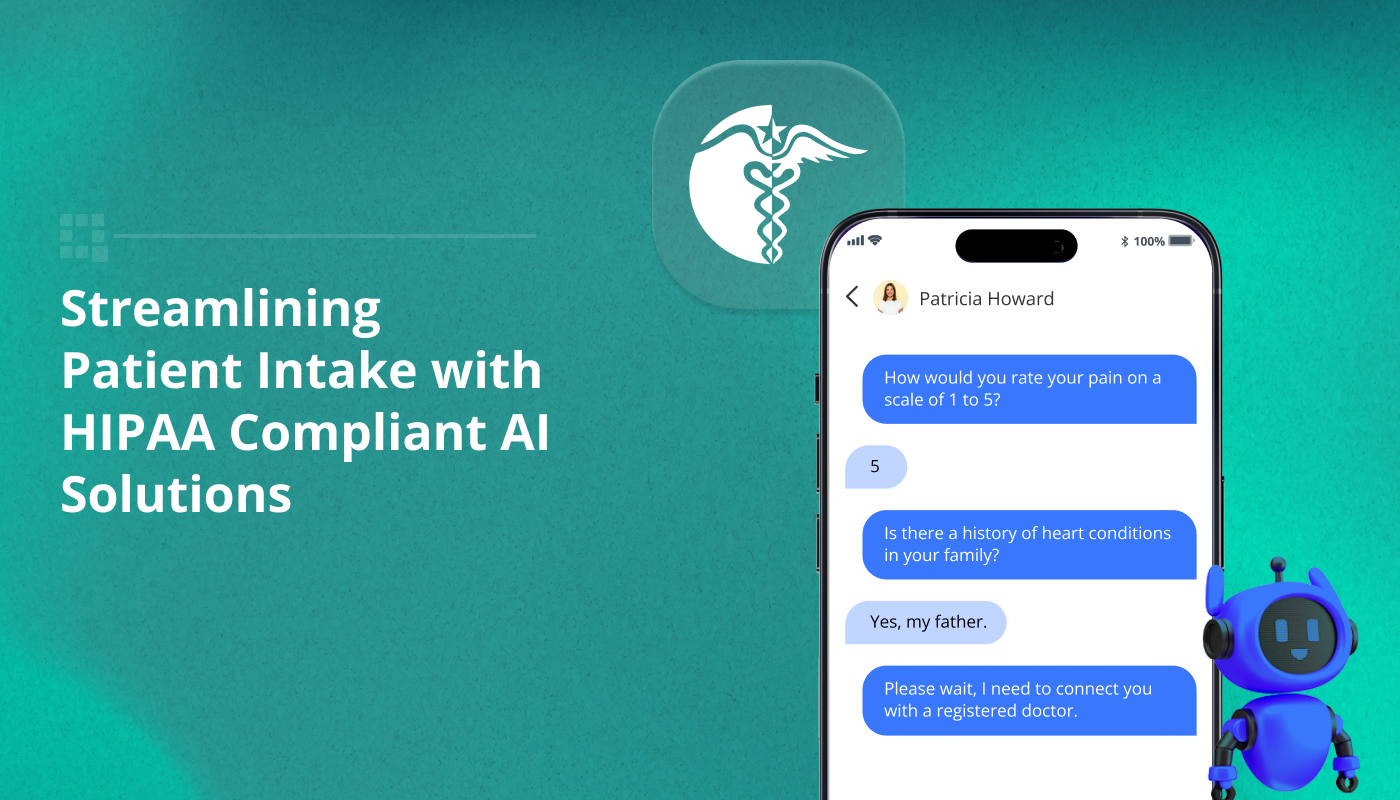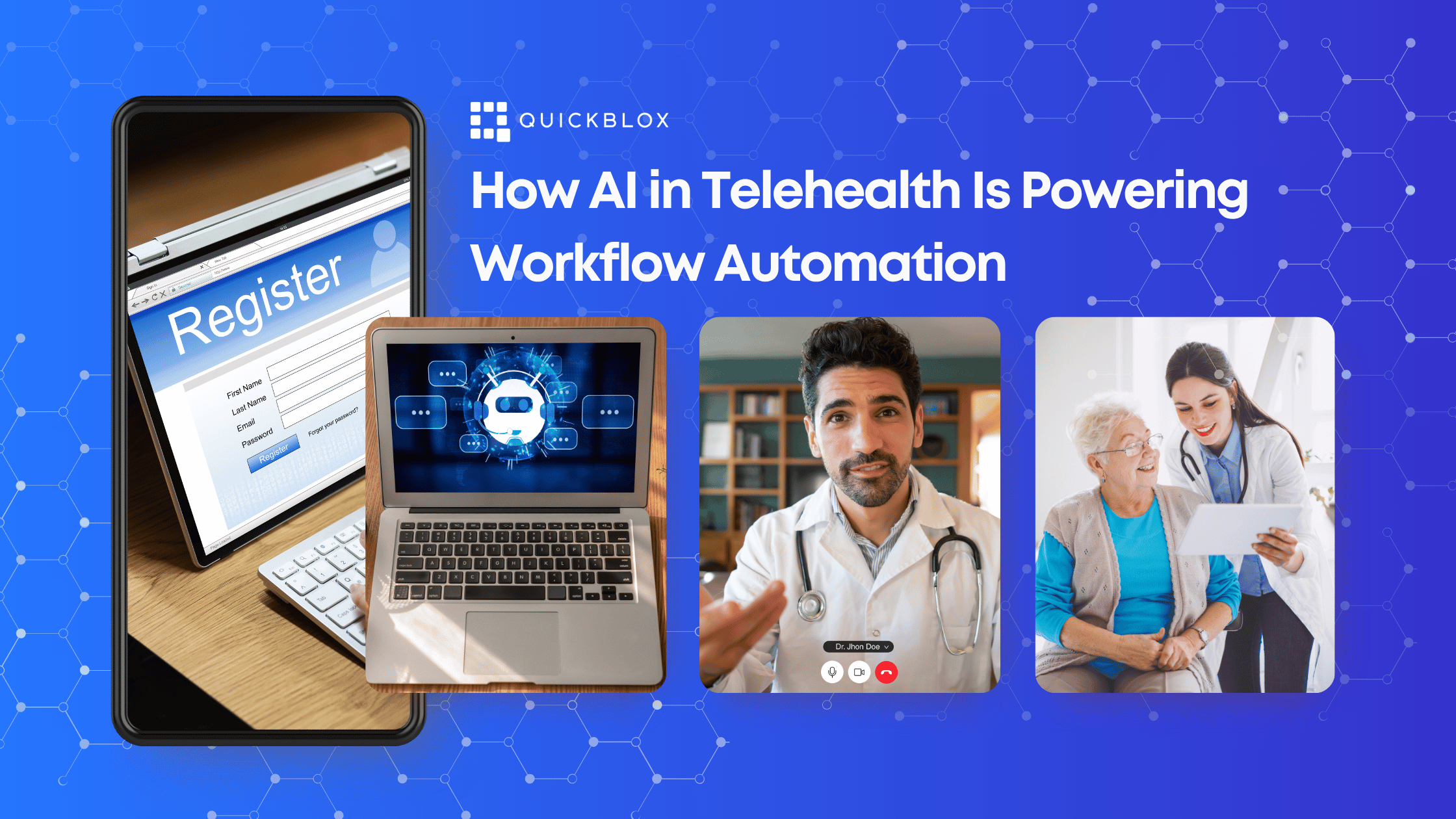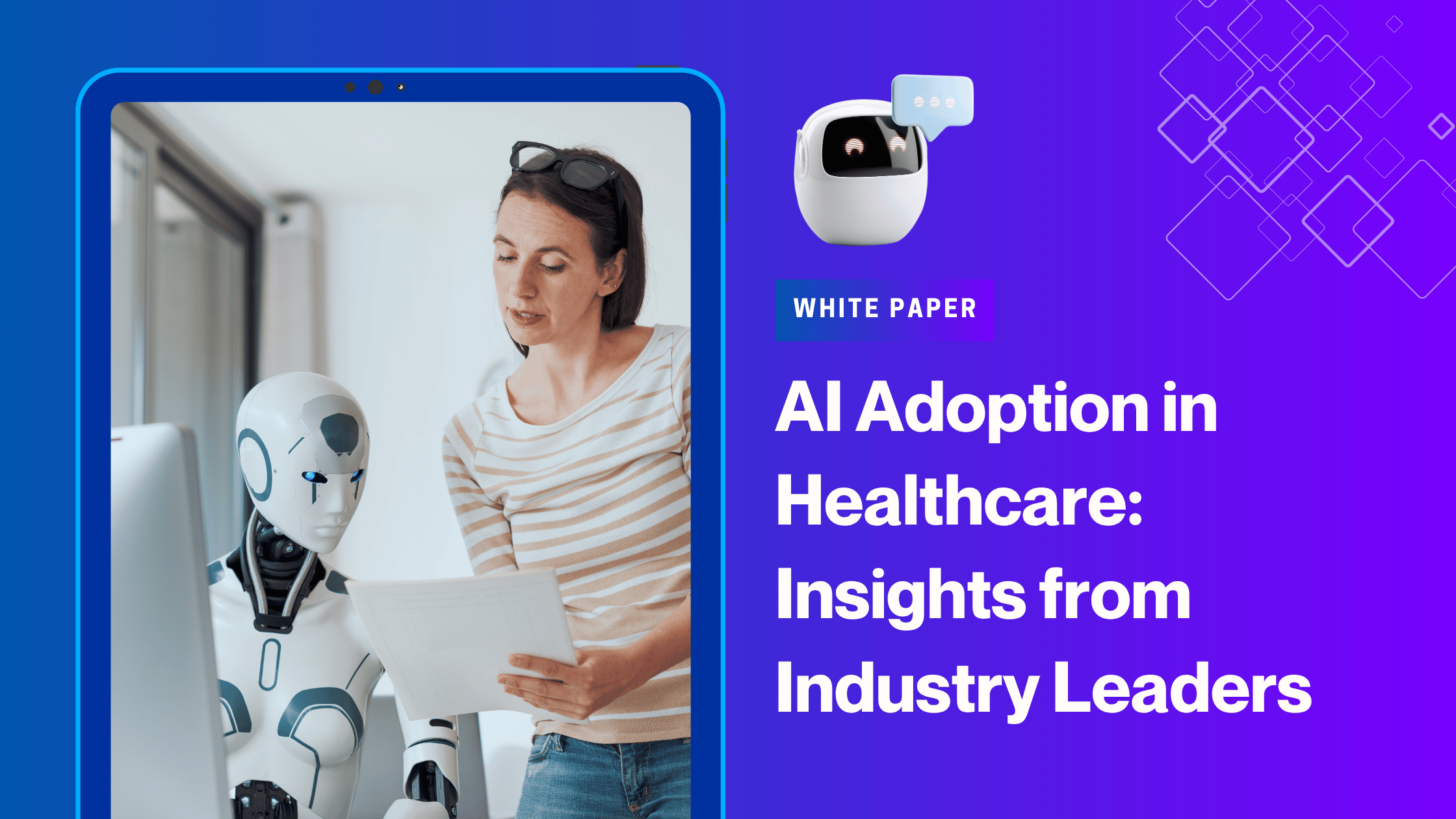
Summary: This article discusses how AI can improve the patient intake process in healthcare by automating routine tasks, reducing administrative burdens, and ensuring data security. It covers the challenges of traditional intake methods, the advantages of AI-driven solutions, and the key components that make these systems effective, such as NLP, EHR integration, and human handover. The article also highlights SmartChat Assistant from QuickBlox as an example of an AI tool that enhances efficiency, compliance, and patient care, making it a valuable solution for healthcare providers and healthtech companies.
Table of Contents
Introduction
One crucial but frequently ineffective step in the delivery of medical care is the patient intake procedure. This first interaction a patient has with a healthcare professional can be burdensome for both the healthcare organization as well as the patient. This crucial phase takes time and resources away from patient care because it involves a ton of paperwork, repetitive data entry, and manual verification. This procedure also has a high risk of human error, which could result in inaccurate patient data, treatment delays, not to mention higher administrative expenses. Furthermore, patients frequently find themselves spending too much time filling out repeated papers during the typical intake process, which can be a frustrating experience for them.
Thankfully, new AI technologies offer several solutions to many of these administrative pain-points. AI assistants, powered by natural language processing (NLP), machine learning, and other AI technologies, can collect data, perform triage, and lighten the administrative load on medical professionals. Healthcare businesses can increase the efficiency of their intake processes while maintaining a high level of patient privacy and data security by utilizing AI tools that comply with HIPAA regulations. The following article will outline the problems with the present patient intake system and highlight new AI-driven remedies.
Challenges of Traditional Patient Intake
Traditionally, patient intake involves a series of steps including form filling, providing medical history, verifying insurance information, and answering a series of questions about symptoms and conditions. But the process remains inefficient. Here is a closer look at a few of the major issues:
- Time Consumption and Inefficiency
Patients often arrive early for appointments to complete lengthy paper forms, a process that can be tedious and repetitive. This adds unnecessary stress to patients and consumes valuable time for healthcare providers. Research has indicated that administrative duties such as patient intake can eat up a large chunk of a healthcare provider’s day, taking away from time that could be spent on patient care and consultations. For example, physicians spend nearly 49% of their day on tasks related to electronic health records (EHR) and other clerical work, leaving only 27% of their time for actual patient care. Another study found that primary care providers (PCPs) spend about 60% of their work time on administrative tasks, which include filling out forms and updating patient records. No wonder then that so many healthcare providers are reporting stress and burnout.
Learn more about, Exploring the Role of AI Chatbots in Patient Triage and Diagnosis
- Data Entry Errors and Inaccuracy
Manual data entry, central to traditional patient intake, is far from error-proof. Handwritten forms can be challenging to read and patients may unintentionally give inaccurate information because they are tired or confused. Unintentional errors may result in incorrect diagnoses, postponed treatment, and even drug errors, all of which can have negative repercussions. The procedure is made even more ineffectual by the need for extra time for verification and revisions in order to ensure data accuracy.
- Patient Dissatisfaction
Lengthy form-filling that requires repeating information can be time-consuming and tiresome for patients, which can cause frustration and discontent. Moreover, patients may feel less connected to their doctor’s clinic as a result of the impersonal nature of paper forms.
Learn more about, How to Leverage Chatbots for Streamlining Healthcare Logistics
The Potential of AI in Patient Intake
AI-powered solutions have the potential to transform patient intake by solving these issues and making it more accurate, efficient, and patient-friendly. Healthcare companies may increase patient satisfaction, expedite procedures, and improve data accuracy by utilizing cutting-edge technologies.
- Automation and Efficiency
Routine tasks like data input, form filling, and appointment booking can be automated by AI-powered systems, freeing up staff members to concentrate on more difficult patient care duties. The use of voice commands and typed responses to communicate with computers is made possible by NLP technology, which streamlines the intake procedure even further. AI algorithms can also optimize the scheduling of appointments, cutting down on wait times and raising patient satisfaction.
- Enhanced Data Accuracy and Insights
AI is capable of analyzing patient data at a speed and accuracy never before possible, finding potential discrepancies, information gaps, and risk factors. In order to find patterns and trends in massive amounts of data, machine learning algorithms can be trained, which helps healthcare professionals make more informed decisions. By optimizing data quality, AI enhances patient care and outcomes.
- Improved Patient Experience
AI-driven patient intake can create a more positive and convenient experience for patients. AI enables patients to take charge of their healthcare experience by providing self-service choices like online check-in and form completion. AI-powered chatbots may also respond to patient inquiries and offer real-time support, which lowers irritation and raises satisfaction.
Key Components of AI Patient Intake
Now that we have outlined some of the key benefits of AI patient intake, let’s look more closely at what an AI driven system of patient intake looks like.
AI Patient Intake refers to the process of using AI technologies to automate and streamline the initial steps a patient goes through when entering a healthcare facility or interacting with healthcare services. By automating these processes, AI technology reduces the need for manual input from both patients and administrative staff.
- Natural Language Processing (NLP):
NLP is a crucial AI technology that allows the system to understand and process human language. It enables AI systems to interact with patients through chatbots or voice assistants, guiding them through the intake process, answering questions, and collecting necessary information without the need for paper forms or manual data entry.
- Electronic Health Record (EHR) Integration:
For optimal efficiency AI patient intake systems are integrated with EHR systems to automatically pull in existing patient data, such as medical history and insurance details. This integration ensures that the information collected during intake is accurate, up-to-date, and readily available for healthcare providers, while lowering the possibility of errors. Furthermore, by integrating with an EHR system, AI patient intake systems can pre-fill forms, verify insurance details, and even predict patient needs or risks, all the while ensuring compliance with regulations such as HIPAA.
- Automated Data Collection and Analysis:
AI solutions can automatically gather data from various sources, including patient-provided information, previous medical records, and even wearable devices. This data is then analyzed in real-time to identify any potential health risks, flag inconsistencies, or suggest further questions or tests that might be necessary.
- Compliance and Security Measures:
The safeguarding of personal health information (PHI) is one of the main issues in healthcare. HIPAA laws must be followed by any technology used in this industry to protect patient privacy and data security. This includes digital AI patient intake processes. These systems are designed with robust encryption, access controls, and audit trails to protect sensitive patient information and maintain confidentiality.
- User-Friendly Interfaces:
A successful AI patient intake solution must be easy to use for patients of all ages and technical abilities. This includes intuitive design, clear instructions, and multi-language support to accommodate diverse patient populations.
- Human Handover
Even though AI systems are highly effective at collecting and analyzing data, there are some situations in which the nuances of a patient’s health or the complexity of their questions or concerns could be beyond the scope of automated systems. In these situations, it is essential to have the ability to smoothly handoff from the AI system to a medical practitioner, as this guarantees the patient gets the appropriate level of care.
A human handover feature is especially crucial in situations where a patient’s symptoms could point to a serious or urgent illness that requires quick, individualized care. For example, if a patient reports chest pain, breathing difficulties or other severe symptoms during the intake process, the AI system can quickly escalate the case to a healthcare provider, ensuring that no critical conditions are missed.
Additionally, human handover enables a more compassionate exchange when handling delicate topics like patients who might be suicidal or facing mental health challenges. In these circumstances, a human professional’s presence is necessary to give patients the emotional support and empathic communication they may require.
Learn ore about, Enhancing Healthcare Communication with Generative AI
Conclusion: How SmartChat Assistant Can expedite Patient Intake
The administrative burden on healthcare providers, particularly during the patient intake process, can significantly detract from the time spent on direct patient care. However, innovative solutions like the SmartChat Assistant from QuickBlox offer a way to streamline this critical process while ensuring compliance with HIPAA regulations.
SmartChat Assistant is specifically designed to expedite patient intake by leveraging customizable AI forms to gather vital information from patients. This includes collecting their medical history, personal details, and the reason for their visit—all through a user-friendly chat interface. The assistant goes a step further by performing basic triage, categorizing patients based on the urgency of their conditions, ensuring that the most critical cases receive immediate attention.
For instance, when a new patient visits a healthcare provider’s website, the SmartChat Assistant initiates a conversation via a HIPAA-compliant chat window, securely gathering the necessary data. This automation accelerates the intake process while ensuring data security and compliance.
In addition to directly assisting healthcare providers, the SmartChat Assistant is an excellent solution for healthtech firms looking to integrate AI-driven patient intake processes into their platforms. Its adaptable design allows for seamless integration into existing systems, enhancing the overall user experience. Healthtech companies can leverage this tool to offer automated patient intake and secure data processing to their clients, either as an integrated feature or as a ready-to-use, white-label solution.
The adoption of AI in healthcare is not just a trend but a necessity. Whether used directly by healthcare practices or embedded into healthtech solutions, SmartChat Assistant offers a reliable and efficient way to enhance patient care and streamline operations. Contact us to find out more.








